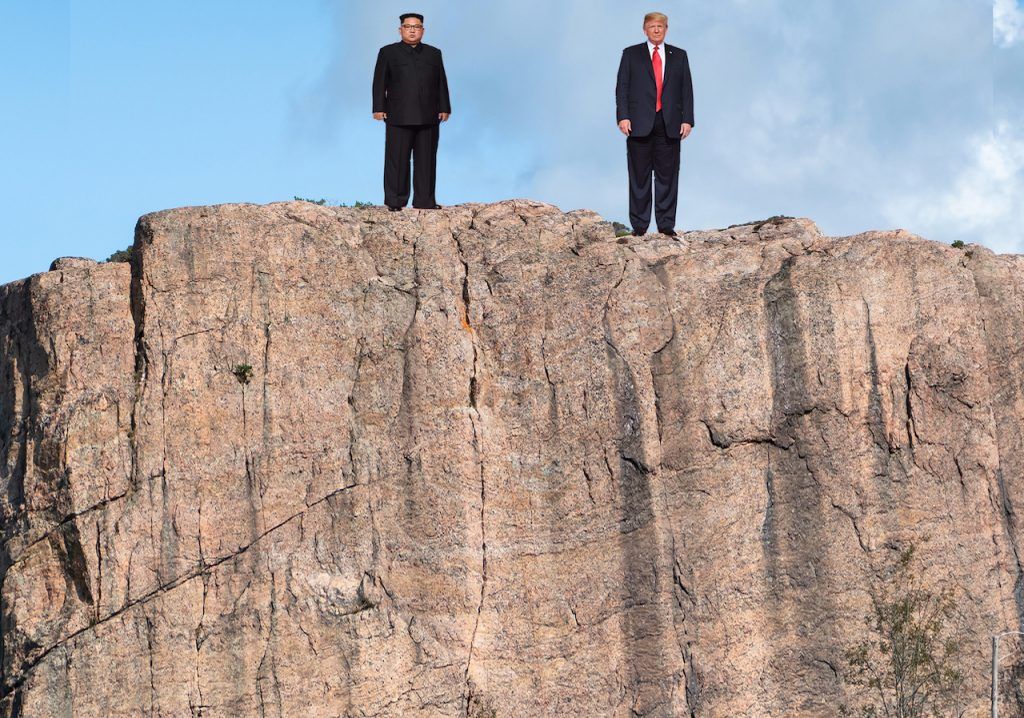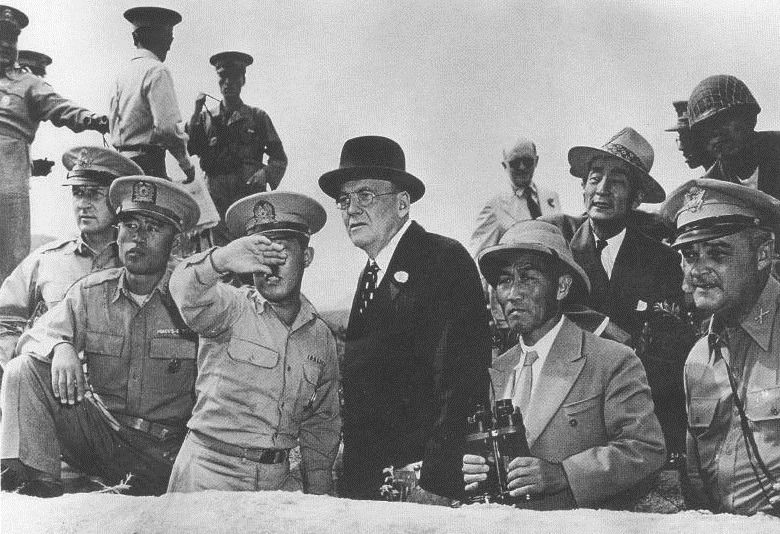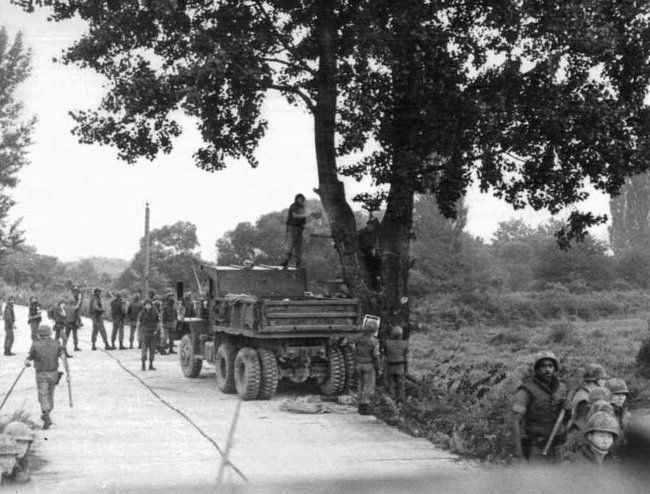After Hanoi, remember the risks of not engaging North Korea
By Bruce Cumings | March 4, 2019

When Donald Trump decided to abort his latest summit with Kim Jong-un, he apparently passed up the opportunity to make a deal deeply in the American interest. The US relationship with North Korea has been volatile and tempestuous for 70 years, and that is the best argument for continued engagement with Pyongyang. Our inability to live with North Korea “as it is” (in former Defense Secretary William Perry’s phrase) has threatened the peace of the entire world time and time again.
Details of the diplomatic failure in Hanoi are still being uncovered, but according to North Korea’s foreign minister Ri Yong-ho, Pyongyang was willing to not simply freeze, but dismantle the Yongbyon nuclear facility under international inspection. This would have removed all their sources of plutonium and enriched uranium except for a reported site at Kangsun, in the outskirts of Pyongyang, that may or may not be another enriched uranium facility. North Korea would thus be left with whatever plutonium or uranium that they might already have harvested, which of course would still be a problem. But Yongbyon, which has been at the center of American concerns since 1991 if not earlier, would no longer exist.
In return, the North Koreans asked for five of 11 United Nations sanctions to be lifted, no small request. They no doubt thought that by giving up the enormous—and enormously expensive—Yongbyon facility, they were making a huge concession to the United States. But this was an impossible deal for Trump, politically, because critics would have said he bought the same horse for the third time. Yongbyon was frozen from 1994 to 2002 under the Agreed Framework negotiated by the Clinton administration’s envoy Robert Gallucci, and then again during George W. Bush’s presidency. Complete dismantlement would be better than a freeze, of course, but one can understand why this was politically unpalatable to the Trump team.
The unexpected result in Vietnam illustrates how difficult it is to forecast President Trump’s behavior. A couple of weeks before the summit, The National Interest asked 76 experts on North Korea to predict what would happen at the second summit. (I didn’t know there were 76!) I would have been the 77th, but I declined their kind offer because I had no idea what the summit might hold. Trump has swung from the extreme of threatening to “totally destroy” North Korea in his UN General Assembly address in September 2017, to a virtual bromance with Kim Jong-un at the Singapore summit in April last year.
Many analysts are pointing to National Security Advisor John Bolton as the culprit in scuttling an agreement in Hanoi, and if indeed he has Trump’s ear we are in for trouble. In his memoir, Bolton takes credit (if that this the right word) for demolishing the 1994 freeze during the first Bush administration, and he’s on record as saying that his preferred policy toward North Korea is that there be no North—an end to the regime. Of course, it is anybody’s guess whether Trump will continue engagement with Kim, or return to a strategy of “fire and fury.” If it is the latter, he will join a long line of presidents who have been on the brink of war with North Korea (not just Barack Obama, who Trump has said came close several times).

All Dulles’ efforts. Dwight D. Eisenhower’s Secretary of State, John Foster Dulles, is perhaps the most interesting case in this regard. He visited the 38th parallel (the line dividing North and South Korea) one week before the war broke out in 1950, and came to a fine appreciation of the civil nature of the Korean War. When he met with South Korean president Syngman Rhee on that visit, Rhee pressed him time and again to back an invasion of the North by the South (also known as the Republic of Korea, or ROK). Soon the United States joined this war, and in October 1950 decided to invade the North on a “roll-back” or regime-change mission; that led to a huge debacle and war with China.
After the war ended, Dulles came back many times to the possibility of a new conflict. At a National Security Council (NSC) meeting in 1954, he speculatedthat the North might—in a rather creative fashion—start things up again: “[Dulles] thought it quite possible that the Communists would launch their attack by infiltrating ROK units and staging an attack on the Communist lines in order to make it appear as though hostilities had been started on ROK initiative.”
At several other high-level meetings, Dulles worried aloud that the United States would not know how a new war might start in Korea, and that Rhee might well start it. At the l68th meeting of the NSC in October l953, Dulles warned that “all our efforts” must be to forestall a resumption of war by Rhee. In 1957, at the 332nd meeting, he still worried that Rhee might “start a war.” Two weeks later: “If war were to start in Korea… it was going to be very hard indeed to determine which side had begun the war.”
It is in this specific context that Dulles lent his agreement to the Joint Chiefs of Staff’s desire to place nuclear weapons in Korea. Pursuing the civil war deterrent that Harry Truman’s top diplomat Dean Acheson applied to Korea before the war, Dulles sought to restrain both sides. The idea went that hotheads like Rhee and Kim Il-sung would think twice before starting a war that would rain nuclear destruction on the peninsula. Of course, the nukes would be kept under exclusive American control, and would only be used in the event of a massive and uncontainable North Korean invasion. Hundreds of such weapons remained in South Korea until they were removed in 1991.

The march to avoid war. When the North Koreans seized the US spy ship Pueblo in January 1968, Lyndon Johnson contemplated an air attack in retaliation, but changed his mind upon learning that American warplanes stationed in the South only carried nuclear weapons. The ultimate absurdity of the US grabbing these two tigers by the tail occurred in 1976, when the so-called “tree cutting” incident resulted in the death of two American army officers at the hands of North Korean soldiers who were angered by the chopping of a poplar tree in the DMZ. Gerald Ford responded by marshaling an enormous land, air, and sea armada to threaten Pyongyang and, according to a study by Peter Hayes (who has examined this crisis more closely than anyone else) the Peninsula was at the brink of war for days on end. When North Korean sappers blew up the South Korean cabinet in Rangoon a few years later in 1983, the Americans had to move heaven and earth to keep the South Koreans from striking back.
War nearly came again in June 1994, when Bill Clinton decided to launch a preemptive strike on the Yongbyon complex. Jimmy Carter aborted the attack by flying directly to Pyongyang and initiating a freeze with Kim Il-sung’s blessing. Many analysts have derided Trump for saying Obama nearly went to war, but he’s not entirely wrong. In 2011, after various skirmishes in the West Sea, Defense Secretary Leon Panetta told CNN that the United States had been “within an inch of war” for weeks. And it is now clear that Trump was also was on the verge of attacking the North in December 2017, to give Kim’s regime a so-called “bloody nose.”
This history illustrates that the formal state of war that’s held on the Korean Peninsula since 1953 is not just a technicality; there is no more dangerous and volatile confrontation in the world than the one pitting the United States against North Korea. It is remarkable that the first warning of war came in March 1946, one month after Kim Il-sung came to effective power as head of the central Interim People’s Committee. The warning came from General John R. Hodge, commander of the US Military Government in South Korea—an occupation regime that lasted three years and deeply shaped postwar Korean history, but is all but forgotten in the United States. Seventy-three years later, the problem remains as unsolved as it is explosive.
Together, we make the world safer.
The Bulletin elevates expert voices above the noise. But as an independent nonprofit organization, our operations depend on the support of readers like you. Help us continue to deliver quality journalism that holds leaders accountable. Your support of our work at any level is important. In return, we promise our coverage will be understandable, influential, vigilant, solution-oriented, and fair-minded. Together we can make a difference.
Topics: Nuclear Risk, Nuclear Weapons















trump is incompetent, stupid. Others should have been sent. If you want to do a deal, trump is the last (person?) who should be involved. Everything trump touches turns to sh*t